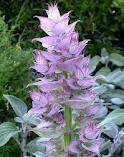HAREBELL, CAMPANULA ROTUNDIFLORA
Harebells are the Bluebell of Scotland, although they are not called bluebells elsewhere. These are delicate flowers that grow on a long, thin stem which produces a milky sap when cut. The stem is so thin that the weight of the flowers makes them bend; the flowers themselves are paper thin however and do not weigh much. They have been little used in traditional medicine in the UK Scotland Scotland
More benignly these delicate bell-shaped flowers were also associated with fairies in Victorian times, and were said to be fairies’ sleeping bowers, or their drinking goblets, for dew. Some superstitions say that these plants help you to see the fairies or the little people and it was believed that they could help transport a mortal to Faerieland. It was supposed that they could part the veil between this world and that of the faeries.
Some of the Native American tribes used the sap from these flowers to cure earache and a decoction of the plants was used as eyewash. The root was chewed for heart and lung problems.
It is said that the plants have antifungal and antiviral properties, as well as possibly having compounds in them which might help in the battle against cancer. The leaves are edible and so are the flowers which can be added to salads.
It has been considered unlucky to pick the plants in the UK
For those of you who are interested, here are the lyrics to the Blue Bells of Scotland song.
Blue Bells of Scotland
Oh where, tell me where, is your Highland laddie gone?
Oh where, tell me where, is your Highland laddie gone?
He's gone wi' streaming banners where noble deeds are done
And it's oh, in my heart I wish him safe at home
Oh where, tell me where, did your Highland laddie dwell?
Oh where, tell me where, did your Highland laddie dwell?
He dwelt in Bonnie Scotland, where blooms the sweet blue bell
Oh what, tell me what, does your Highland laddie wear?
Oh what, tell me what, does your Highland laddie wear?
A bonnet with a lofty plume, and on his breast a plaid
And it's oh, in my heart I lo'ed my Highland lad
Oh what, tell me what, if your Highland
Oh what, tell me what, if your Highland
Oh no, true love will be his guard and bring him safe again
For it's oh, my heart would break if my Highland lad were slain



















































